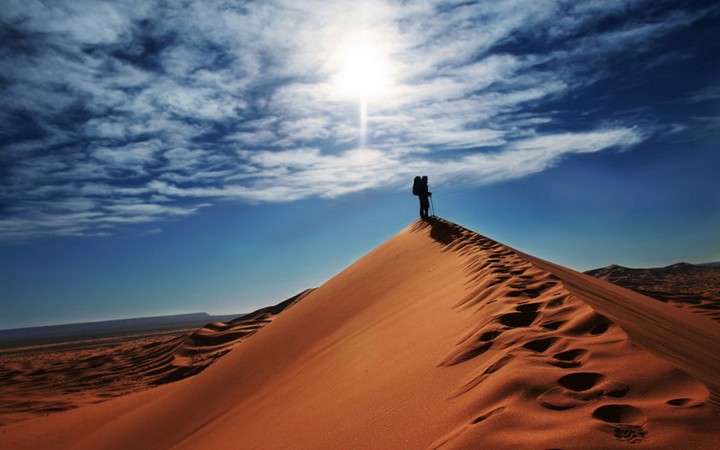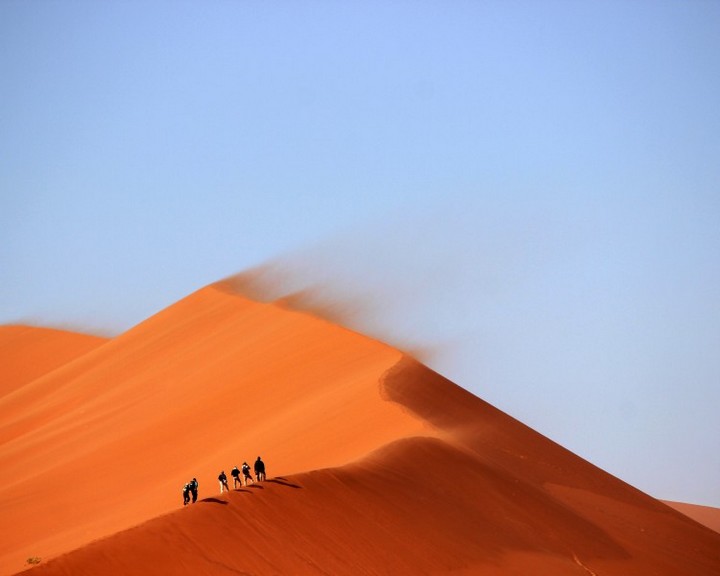
Don’t take any desert hike lightly: you may have to negotiate tough and unforgiving terrains, dangerous plants and reptiles, and the extreme isolation in the energy-sapping heat of the desert.
To the untrained eye the desert may seem nothing more than a vast piece of land covered in sand. However, for those who love exploring nature through hikes and treks, the desert is a unique challenge that combines the joy of discovering the majesty of nature with the thrill of exploring the limits of their strength, endurance, and fitness. If you are up to the challenge, then a hike in the desert can transform your idyllic trip into a thrilling high-adrenaline experience.
Preparation is the key
You cannot afford to be too romantic about the desert. Something as minor as a small injury, a bruise, dehydration, or lack of protection against the biting cold during the night can lead to severe consequences. Proper planning is very important for a complication-free desert hike.
Planning for a desert hike – don’t step out without these essentials
Dehydration is your biggest enemy in the desert. Conserving water may not seem like a big deal when hiking in the cool environment of a hill or mountain covered in trees; however, not consuming a minimum of one gallon per person per day can lead to severe dehydration in the desert. With a gallon of water weighing eight pounds, each member of the team will be carrying around 25 pounds of water alone for just a three-day hike. Remember, you will need enough water and high-energy protein-rich food for the entire hike including the return trip.

Orientation Tools
Topographic maps, GPS devices, and compasses are necessities. It is very easy to get lost in the desert where every rock and dune looks the same. The extreme heat can also cook your delicate electronic devices. Ensure that you know how to read old-fashioned maps and how to use compasses to ensure you have failsafe navigational aids to ensure your safe return.
Warm Sleeping Bag
A warm sleeping bag is essential if you intend to spend the night in the desert. Temperatures can fall drastically after the sun goes down. Lack of proper sleep can lead to careless mistakes and painful injuries.
Usually, it’s best to avoid overnight stays if it is your first adventure. You want somewhere nearby with facilities to recover from a long day, like the Whitney Ridge Resort, where you can get clean water and have a good shower without getting too cold. While the heat of the day can be dangerous in some deserst, the low temperatures at night are often unexpected, and it can be hard to contend with them.
Sunscreen and protective clothing
Unlike normal hikes, even something as ordinary as exposure of naked skin to the sun can lead to severe burns and injuries. You should pack sunscreen and protective clothing to protect your body. Commonly used protective options include a scarf for the face, workout shirts for men for the body, and comfortable cargo pants, socks, and shoes for the lower body.
Other vital tools
Other vital tools include a first aid kit, a multi-utility knife, and a compact and secure backpack to carry everything that you need across the desert without straining your muscles.
Conclusion
You cannot claim to be a truly experienced hiker until you have experienced a desert hike where even a small misstep is enough to cause a real emergency. The secret to a safe desert hike is to do your homework, plan the hike, pack all essential tools and equipment, and enjoy the glorious majesty of the desert.
